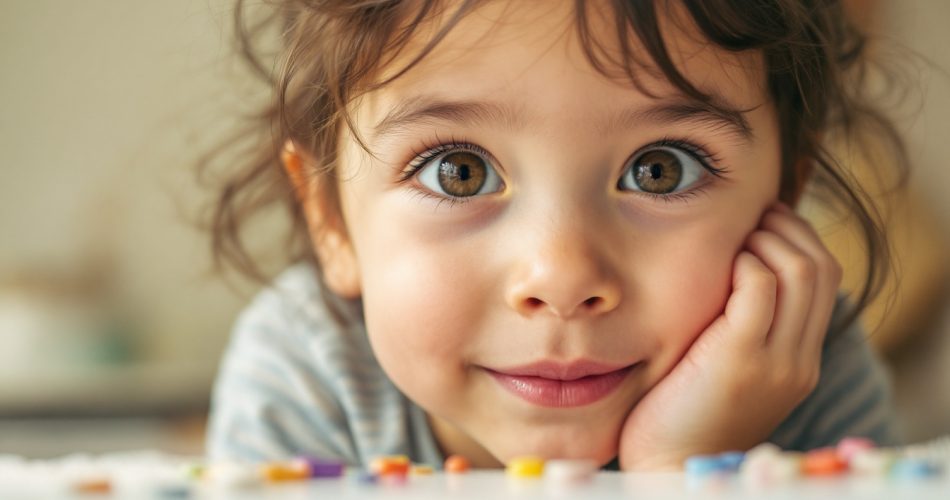What is self-image?
Introduction
As parents, we often focus on nurturing our children’s physical and emotional needs, but one aspect that deserves special attention is self-image. Understanding self-image is crucial because it significantly influences how children perceive themselves and interact with the world around them. In this post, we’ll explore what self-image is, its components, how it develops, and most importantly, how you can help your child cultivate a positive self-image.
Understanding self-image
What is self-image?
Self-image refers to the mental picture we have of ourselves—our perceptions of our appearance, abilities, and overall worth. It encompasses both conscious thoughts and subconscious beliefs about ourselves. For children, a healthy self-image can lead to better mental health outcomes and improved social interactions.
The components of self-image
- Self-esteem: This is the evaluative aspect of self-image. It reflects how much value we place on ourselves and our capabilities. Children with high self-esteem are more likely to take risks and engage positively with others.
- Body image: This specific aspect of self-image relates to how children perceive their physical appearance. A positive body image can foster confidence while a negative body image may lead to feelings of inadequacy or anxiety.
How does self-image develop?
Self-image isn’t formed in isolation; it’s influenced by various factors:
- Family dynamics: The way parents communicate with their children plays a vital role in shaping their self-perception.
- Peer interactions: Friendships can either bolster or undermine a child’s view of themselves based on acceptance or rejection experiences.
- Media exposure: With social media being prevalent today, unrealistic portrayals can impact children’s perceptions of beauty and success.
The role of parents in shaping self-image
Creating a positive environment
One essential way parents can influence their child’s self-image is by fostering an environment filled with encouragement and praise. Here are some tips:
- Praise effort over results: Instead of only celebrating achievements (like grades), recognize the hard work your child puts into tasks.
- Focus on strengths: Highlighting what your child does well reinforces their sense of competence.
Modeling healthy self-talk
Children learn from observing their parents’ behaviors and attitudes. If they hear you speak negatively about yourself, they might adopt similar language patterns toward themselves.
Language matters
Use positive affirmations when discussing challenges or setbacks:
- Instead of saying “I’m terrible at this,” try “I’m learning something new.”
This subtle shift not only models healthy behavior but also helps instill resilience in your child.
Encouraging open communication
Fostering an environment where your child feels safe expressing their thoughts about themselves is crucial for developing a positive self-image.
Listening to feelings
Create regular opportunities for conversations about emotions:
- Set aside time each week for family discussions where everyone shares one thing they like about themselves.
By encouraging open dialogue, you validate their feelings while reinforcing positive attributes.
Signs of poor self-image in children
Recognizing the signs that indicate poor self-image in children allows parents to intervene early:
- Frequent negative self-talk: If your child often criticizes themselves verbally or nonverbally (e.g., sighing after looking in the mirror), this could signal low self-worth.
- Withdrawal from social activities: Avoidance behaviors may indicate fear of judgment or inadequacy.
- Overly critical behavior towards themselves or others: If your child frequently compares themselves unfavorably to peers or engages in harsh criticism toward others, it might reflect deeper insecurities within them.
When to seek help
If you notice persistent signs that concern you regarding your child’s well-being:
- Consult with teachers who might provide additional insights.
- Consider seeking guidance from mental health professionals specializing in children’s issues if necessary.
Building a positive self-image in children
Creating opportunities for nurturing positivity within your child’s perception requires intentionality:
Practical activities for parents:
- Affirmation jar
- Create an affirmation jar as a family project! Each member writes down something positive about themselves on slips of paper weekly; read them aloud during family gatherings.
- Gratitude journals
- Encourage kids to maintain gratitude journals focusing not just on external things but also personal attributes they appreciate—“I am kind,” “I am creative.”
- Family bonding exercises
- Engage in fun activities together such as cooking meals collaboratively or playing board games where teamwork shines through!
| Activity | Benefits |
|---|---|
| Affirmation jar | Boosts confidence through collective positivity |
| Gratitude journals | Fosters appreciation for oneself |
| Family bonding exercises | Strengthens familial relationships |
Resources for further support
Utilizing available resources can enhance your approach toward fostering a healthy self-image:
| Resource Type | Examples |
|---|---|
| Books | “The gifts of imperfection” by Brené Brown |
| Websites | KidsHealth.org |
| Workshops | Local community parenting classes |
These resources provide insights into further strategies you can implement at home while offering support networks for families navigating similar challenges.
Conclusion
In conclusion, nurturing a positive self-image plays an integral role in raising confident children who feel good about themselves inside out! By creating supportive environments filled with love and understanding along with engaging activities tailored towards building resilience—you equip them not only for childhood but also for life’s journey ahead! Remember that every step taken today contributes significantly towards shaping tomorrow’s future leaders; let’s empower our little ones together!




